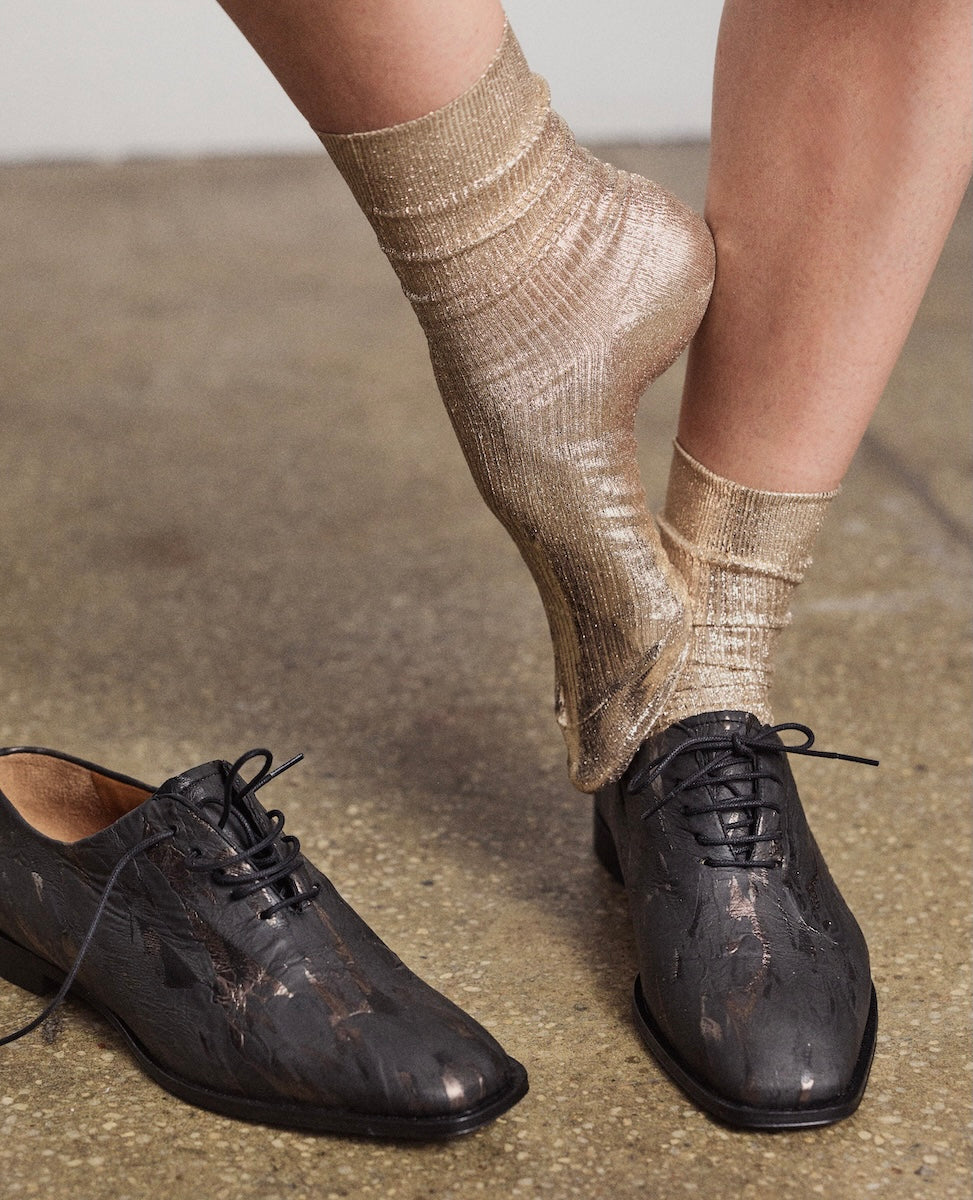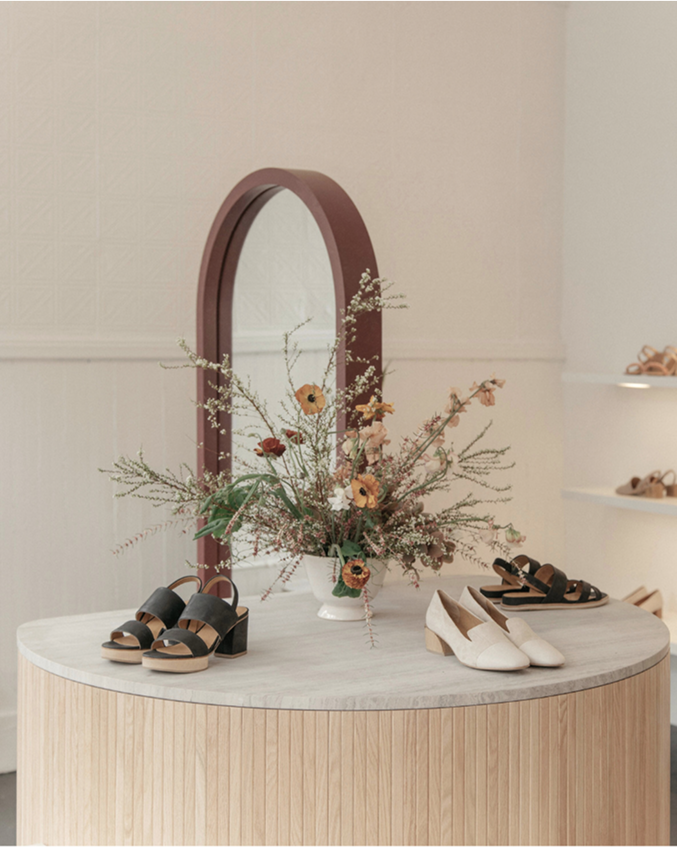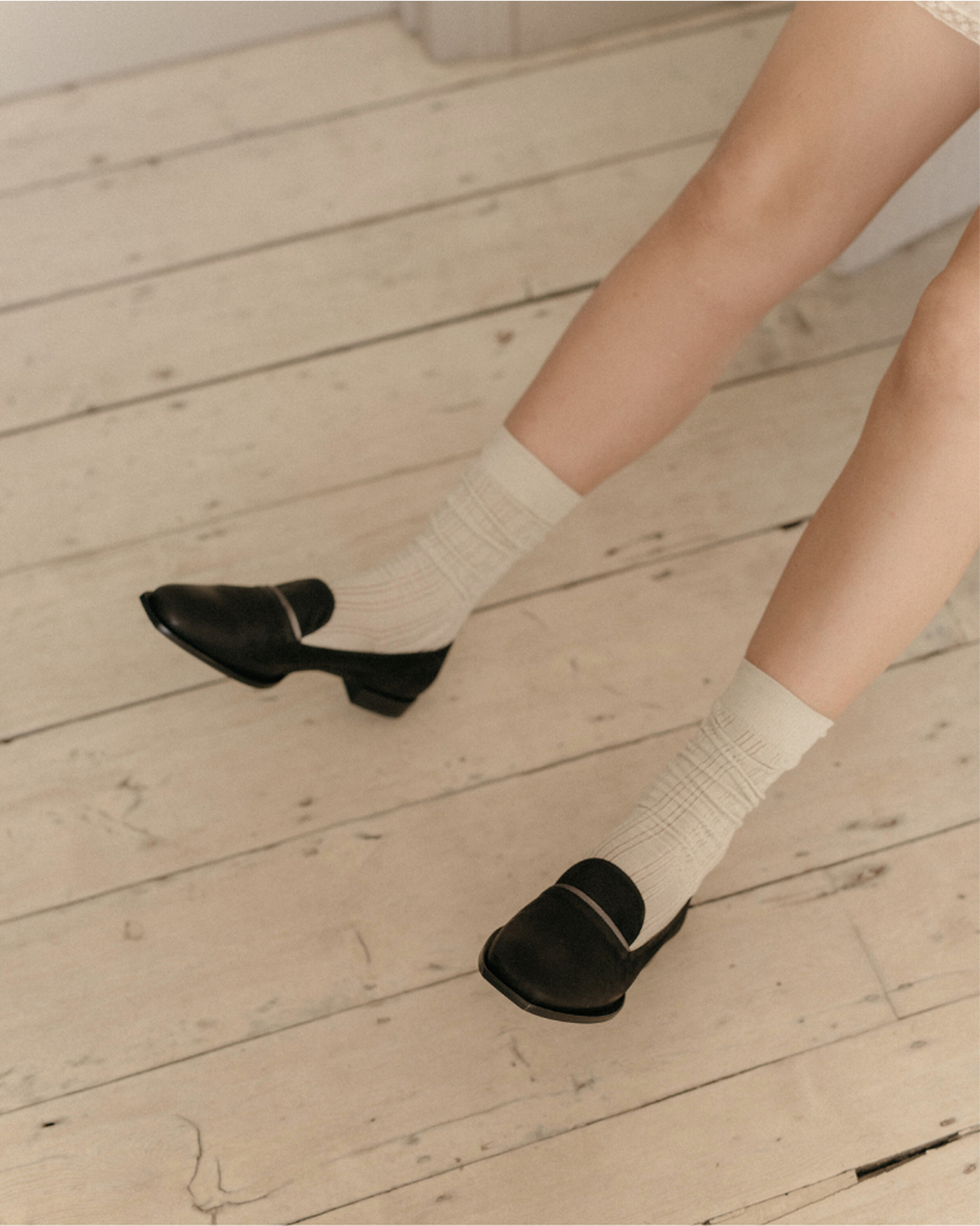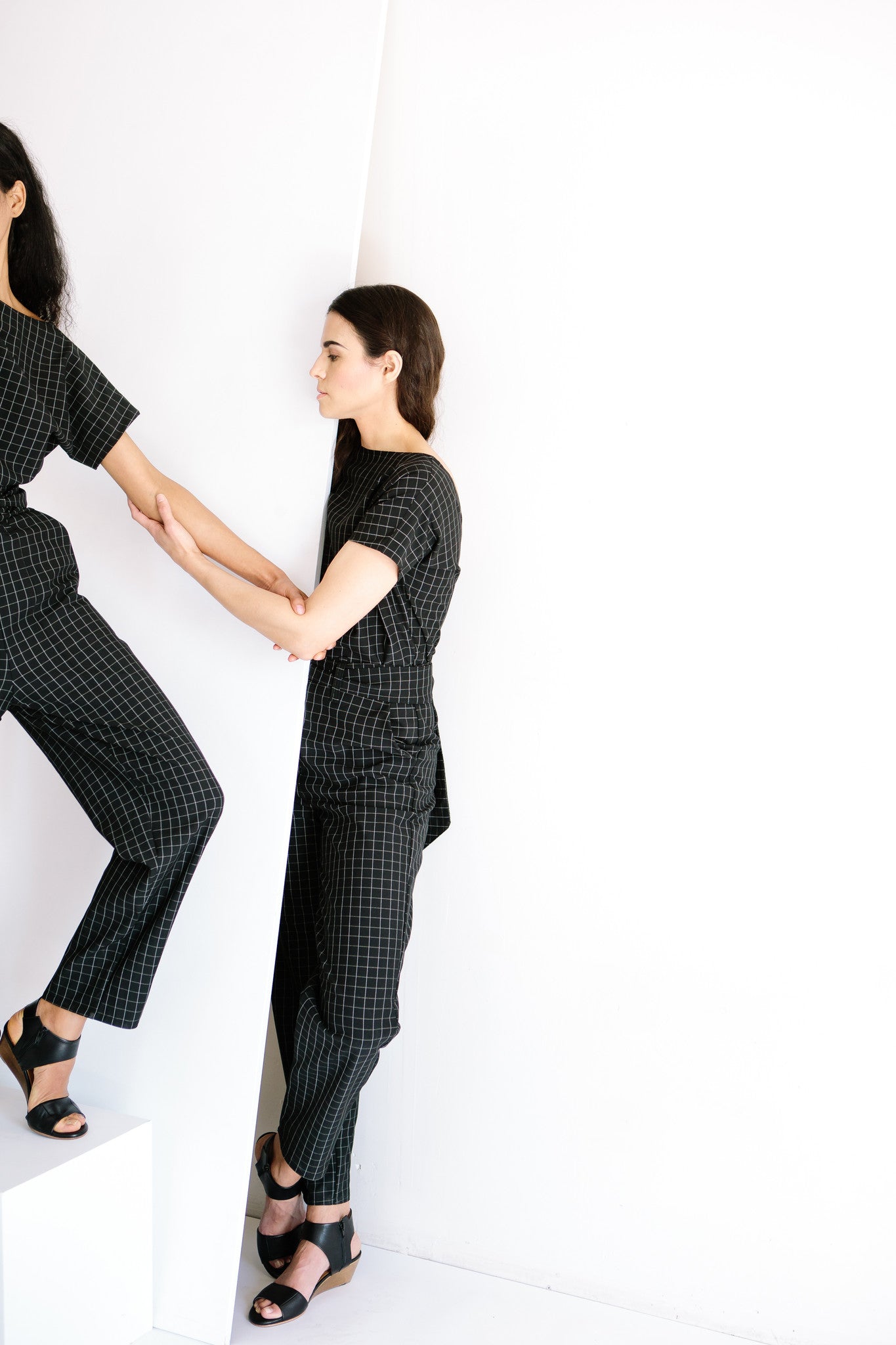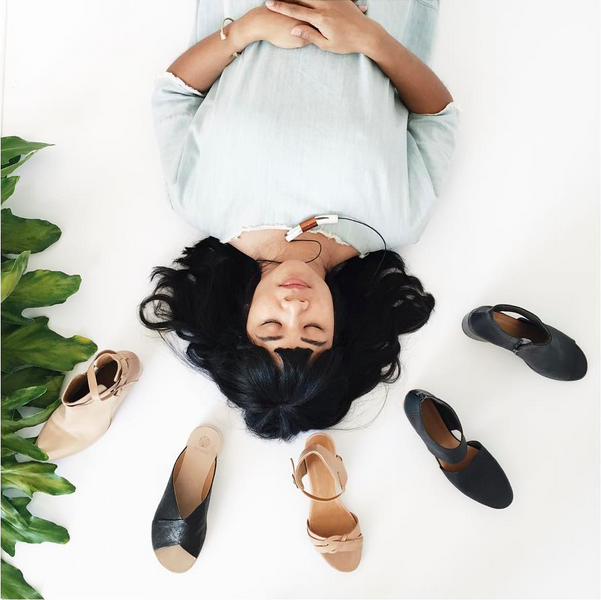In Conversation with Artist Hanna Sandin
At six-foot-two with a shock of blonde hair and delicate features, Hanna Sandin cuts a memorable figure. The New York-based artist and designer of the jewelry line SAMMA divides her time between casting and filing the oversized jewelry that adorns the necks, wrists and fingers of the city’s beau monde, and creating sculptural works in her Gowanus studio. As an artist, Hanna is best known for her enormous hanging mobiles in the style of Alexander Calder. But, instead of Calder’s delicate ellipses and slender color planes, Hanna’s mobiles are strung with industrial scraps and materials salvaged from junk shops and hardware stores. [caption id="attachment_5005" align="aligncenter" width="800"]

mobile by Hanna Sandin[/caption] [read_more] In both practices – jewelry and sculpture-making – there are frequent and rather tantalizing juxtapositions. In the former, it might be in the heaviness of a motorcycle windshield and scuba netting played against the frailty of thin wires. In the latter, brass, copper and bronze repeat in patterns of interlocking modular parts. What unifies the practices is that the works are consistently tactile and confident; materials and medium form a radical harmony. [caption id="attachment_5012" align="aligncenter" width="533"]

mobile by Hanna Sandin[/caption] How did you come to use the mobile as the primary element in your sculptures? The mobile was originally intended to be free of reference. I liked its flexibility, but also that it resembled the visual form linguists use to demonstrate how a sentence works grammatically. The “parse tree” is a pedagogical tool for unpacking the syntax of language. Since they are both composed of nodes and branches, I used the form of the mobile to map the visual-to-verbal. So your work is a literal visualization of language? Noam Chomsky’s premise of a universal sense of grammar – and the sense that grammar feels intuitively right – served as a jumping off point. The mobiles perform the function of abstraction, visually and informationally. They reduce forms to geometric shapes, lines, and colors. The works break down and rebuild language, while making the familiar seem unfamiliar. [caption id="attachment_5006" align="aligncenter" width="800"]

mobile by Hanna Sandin[/caption] Why do you choose certain materials over others? There is such an epidemic of things, so I try to choose common, neutral objects. I'm drawn to things that can fall into two different – though arbitrary – product categories, but are essentially the same material. Pumice is my favorite for that reason. If it’s a little bigger, it’s for cleaning your grill. If it’s a little smaller – and blue – then it’s for scrubbing your feet. Scrub brush, same thing. It can be a bottle brush, or for the toilet or the bird feeder. Even so, there's a limited selection of things. It’s not endlessly new, just deceptively endless. [caption id="attachment_5002" align="aligncenter" width="533"]

Time out in the studio. Hanna dons her well loved PAGE flats by Coclico.[/caption] Is there a corollary in fashion? To me, design today seems focused on appropriation and recycling of ideas. Very little is actually new, but there is a fantasy of self-fulfillment through consumption – buying the “new” you, and expressing yourself through the things you own. It’s a powerful fantasy that we all participate in. In some ways, the work you do with your jewelry SAMMA addresses these questions as well – specifically in terms of using non-precious materials like brass and copper in a rarified context (as adornments for the body). Nearly everything humans have intervened in has been changed from organic to geometric. One need only look around to see that the human-made world is composed of straight lines – and knowable, definable, and workable units. An intimate artifact like jewelry must respond to the constraints of the body in the way it's used and worn. The dichotomy between the formal geometry of the man-made and the organic shape of the body is something I think about and work against every time I design a piece for SAMMA. [caption id="attachment_5007" align="aligncenter" width="533"]

SAMMA bracelets by Hanna Sandin[/caption] What is your design process like? In the past, I have often started designing by looking at pieces that I find second-hand, and taking the parts, stripping them of their designed flourishes to their most basic forms – like a sans serif font – and building up new sets of shapes that link or build through stacking, bundling, or weaving. Do you always wear your own jewelry? How these pieces complement the body in terms of scale and how it is worn is a part of the refining process. I always wear my jewelry, not so much to self-promote (though I love feedback from strangers), but I wear it to learn what works and doesn’t. Making it wearable involves rounding out some of the hard edges. Geometry in relation to the body is an endless game I love playing. If I can't wear it, how can I expect anyone else to? [caption id="attachment_5003" align="aligncenter" width="533"]

Hanna Sandin in the studio, wearing Coclico Page flats.[/caption]
interviewed by Julie Cirelli


